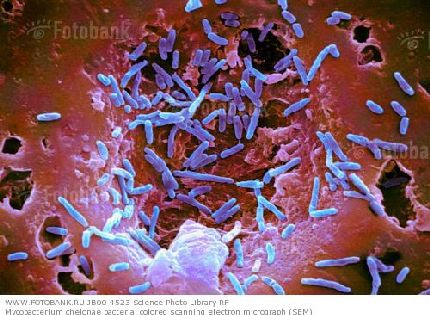The same infectious (viral or bacterial) organisms usually cause bronchitis or pneumonia, and severity of the disease often associated with the general condition of the patient. Bacterial pneumonia differs from bronchitis that invasive lower respiratory infections. Infection broke through the wall of the bronchi and entered in the tissues of lungs. Infected tissue is lung blood vessels that can carry infectious bacteria to other body parts, bodily symptoms (see below) and perhaps more serious disease. For non-smokers: in both pneumonia and bronchitis, lung inflammatory symptoms such as coughing, wheezing, and phlegm (mucus light) produced there. In addition, fever, sweating, chills, and may be shared with any bacterial or viral infection. Because there is much overlap, it is impossible to distinguish a serious case of viral bronchitis from pneumonia without medical examination or chest x-ray. For the purposes of this publication, however, there are some indicators that pneumonia is true, and that you should seek medical advice:

or breathing or severe and persistent symptoms that may include:, chills, weakness, sweating, and
If you have these symptoms, always consult a doctor. Finally, the elderly and those with more severe, chronic diseases should always consult a doctor for many of these principles, a number of reasons, can not be applied. For smokers: Years of smoking alters normal lung capacity to clear bacterial and viral infections. In addition, scarring and chronic immune system disorders of the lungs to make it easier for bacteria to thrive in the lungs of smokers. Thus, we recommend that all smokers with a history of chronic bronchitis to see a doctor if they develop acute flares in their respiratory symptoms. See below for more information about chronic bronchitis and emphysema. Doctors use the term bronchitis strattera dosage to describe superficial inflammation of the lower respiratory tract, i. e lungs airways (bronchi). In non-smokers, bronchitis is usually caused by a virus that originally infected the nasal passages and upper respiratory tract, and then moved to the chest. Bronchitis is an acute and easier to manage when it occurs in people, not a long history of smoking. Long-term smokers with chronic bronchitis or emphysema who develop symptoms of the outbreak are considered and treated differently than non-smokers. Very elderly and persons with chronic diseases such as diabetes or heart disease also approached with the utmost caution. Acute bronchitis in nonsmokers and healthy people to better manage symptomatic therapy. In any inflammatory process, the body consumes large amounts of water, which makes fluid replacement is necessary. Or
effective in dealing with fever. You can achieve better suppression of dextromethorphan cough and reduce sputum and facilitate blood flow to the breast of guiafenissen. If you have a story, reactive airway disease, or feeling, you can be helped broncholytic inhalers such as albuterol or. If you are healthy, and your symptoms of bronchitis does not improve with conservative measures, a short course
can help. General >> << are used in these cases:,
/ clavulanate (), azithromycin (
) or clarithromycin (). If you smoke, must work with your doctor to treat as pneumonia or bronchitis. .



